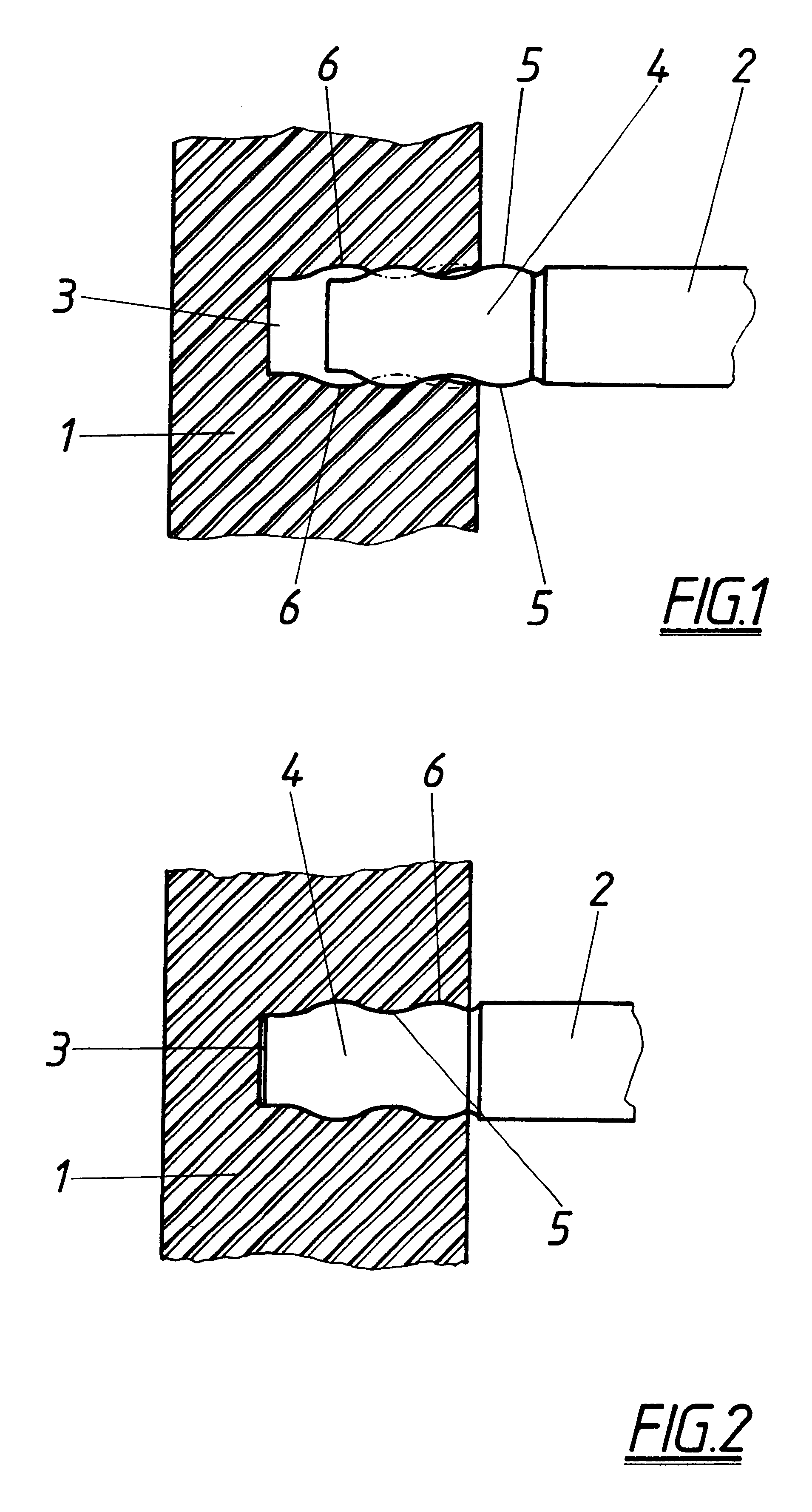Positive-fit connection between a metallic link and an injection-moulded plastic part notably for spectacles
a technology of injection moulding and plastic parts, which is applied in the direction of shrinkage connections, optics, instruments, etc., can solve the problems of unsuitable conventional plug-in connections, unable to automate the insertion of metallic parts into injection moulds, and damage to the surface of frequently refined metallic parts
- Summary
- Abstract
- Description
- Claims
- Application Information
AI Technical Summary
Benefits of technology
Problems solved by technology
Method used
Image
Examples
Embodiment Construction
As is shown in FIGS. 1 and 2, the moulded article 1, which is injection-moulded from plastic, is provided with a plug-in receiving means 3 for the engaging end 4 of bridge 2 for the purpose of connection with a metallic bridge 2. Said plug-in receiving means 3 is provided with a rectangular cross-section-like engaging end 4, with said engaging end 4 being arranged on mutually opposite bridge surfaces with a wave-like snap-in profiling 5. Since the plug-in receiving means 3 is provided with a wall profiling 6 which corresponds to the snap-in profiling 5, the engaging end 4 of the bridge 2 which is inserted into the plug-in receiving means 3 is connected in a positive-locking way with the moulded article 1, as is shown in FIG. 2. During the insertion of the engaging end 4 into the plug-in receiving means 3 it is necessary that the moulded article 1 allows sufficient elastic deformation in the zone of the wall profiling 6 in order to enable the wave crests of the snap-in profiling 5 of...
PUM
 Login to View More
Login to View More Abstract
Description
Claims
Application Information
 Login to View More
Login to View More - R&D
- Intellectual Property
- Life Sciences
- Materials
- Tech Scout
- Unparalleled Data Quality
- Higher Quality Content
- 60% Fewer Hallucinations
Browse by: Latest US Patents, China's latest patents, Technical Efficacy Thesaurus, Application Domain, Technology Topic, Popular Technical Reports.
© 2025 PatSnap. All rights reserved.Legal|Privacy policy|Modern Slavery Act Transparency Statement|Sitemap|About US| Contact US: help@patsnap.com



